Reference Node
In circuits, we usually label a node as the reference node also called ground and define the other node voltages with respect to this point. The reference node has a potential of ![]() by definition. The following symbol is used to indicate the reference node:
by definition. The following symbol is used to indicate the reference node:

As mentioned, the selection of the reference node is arbitrary. However, a wise selection can make the solving easier. As a general rule, it is usually chosen to be
- a node with largest number of elements connected to it, or
- a node which is connected to the maximum number of voltage sources, or
- a node of symmetry.
Node Voltages
The voltage drop from a node to the reference node (ground) is called the node voltage. To keep definition simple, node voltages are usually defined with positive polarities.
Let’s find label node voltages in the following circuit:
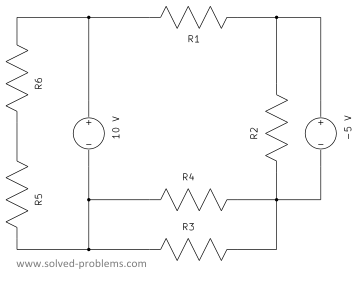
The circuit has 5 nodes:
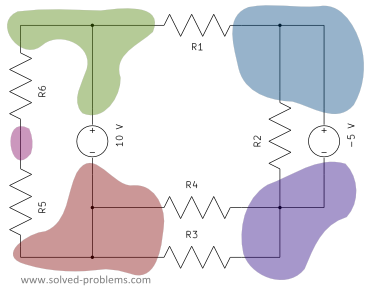
Two of the nodes have 4 elements connected to them. These are the best candidates to be reference point.

Let’s label one as reference node.
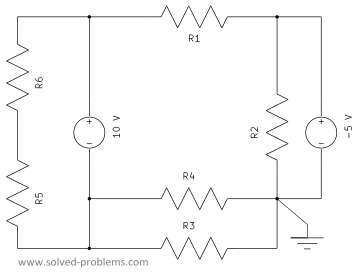
Now, we define node voltages for the remaining nodes. These node voltages represent the voltage between the node and the reference.
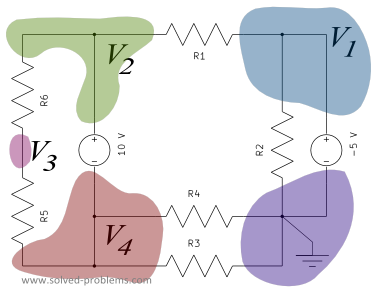
When there is a voltage source between a node and the reference node, the node voltage corresponds exactly to the voltage of the voltage source. In our example, we have two node voltages. The ![]() voltage source is placed between the reference and the node labeled as
voltage source is placed between the reference and the node labeled as ![]() . Therefore,
. Therefore, ![]() .
.
If there is a voltage source between two nodes, the difference between the corresponding node voltages equals to the voltage of the source. In our example, the ![]() voltage source is located between nodes labeled by
voltage source is located between nodes labeled by ![]() and
and ![]() . Therefore,
. Therefore, ![]() . It is important to note that voltage of the positive node minus the one of negative node is equal to the voltage of the source. KVL can be used to show this:
. It is important to note that voltage of the positive node minus the one of negative node is equal to the voltage of the source. KVL can be used to show this:
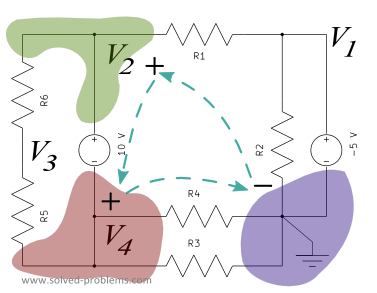
KVL around the loop: ![]() . Recall that the reference node is always defined to be the negative polarity of all node voltages.
. Recall that the reference node is always defined to be the negative polarity of all node voltages.
thank you so much for this information!
I wish if my electrical circuit book is that clear and appealing. Please keep it comming
Thanks a lot for this useful information in my book there is no rule how to choose the reference node 🙂
this is so much better than my teachers explanations and my books, thank you so much! keep them coming!
Only 2 days later, I have final exam.Thank you so much for that.
how to assume the directions of flow of current ? does the wrong assumption of directions of current will affect my calculation of node voltages???????????? reply A.S.A.P
Hi to every body, it’s my first pay a visit of this webpage; this webpage includes awesome and really fine stuff designed for visitors.
hi i want find a friend that can help me in electronic
please send your comment for friend ship to my gmail
warfordark@gmail.com
i thank from personel of this site
Please check out our Facebook/Google pages too. There are some many students around who can help you in electronics.
thank you soo much for all these informations………….thanks a lot………also tell me rule that how choose nodes in a circuit ???